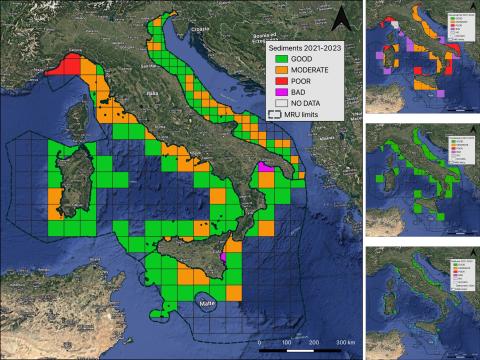Aree
CLASSIFICATION OF BATHING WATER
Data aggiornamento scheda:
The quality of bathing water is essential for the protection of the health of citizens and plays an important role also in terms of the protection of the natural environment and the economic aspects in the tourism sector. For this reason, specific monitoring is carried out throughout the bathing season. With regard to the bathing season 2024, more than 31,600 samples of seawater and lake were collected and analyzed on a total of over 5,000 km of bathing coast. At municipal level the km of coast are divided into more or less extensive bathing waters, for a total of 5,506 bathing waters. The results of the analysis, in addition to guaranteeing the absence of hygienic health risks during the season, have also allowed to classify the waters. The classification was made using the results of the monitoring carried out during the 2024 bathing season and those of the previous three seasons (2023-2022-2021). At the national level, most of the waters are excellent in the classroom (91%), however, however, there are still critical issues due to the presence of water in the low class (1.1%) and not classifiable (1.1%), for which it is not possible to make a quality judgment because most are newly identified and have not completed the 4-year cycle of monitoring, necessary for classification. Even at the regional level, the percentage of water in the excellent and good classes is the highest.
MARINE STRATEGY MONITORING – CONTAMINANT CONCENTRATION
Data aggiornamento scheda:

Descriptor 8 of the Marine Strategy Framework Directive 2008/56/EC (MSFD), in order to achieve good environmental status of marine waters through the gradual elimination of pollution, specifically requires the assessment of the presence of chemical contaminants and their effects in environmental matrices. During the 2021–2023 period, ISPRA conducted monitoring of the Adriatic Sea Subregion (MAD), Ionian Sea and Central Mediterranean Subregion (MIC), and Western Mediterranean Subregion (MWE). The data were processed and integrated with those provided by regional agencies and experimental zooprophylactic institutes.
This monitoring revealed that, although the data coverage for the study of contaminant concentrations varied across matrices and subregions, there was an overall improvement. This allowed for the assessment of GES (Good Environmental Status) for the sediment matrix in two MRUs and for the biota matrix in the Adriatic MRU.
WATER ABSTRACTION FOR CIVIL USE
Data aggiornamento scheda:
The indicator refers to 2022 and is drawn up on the basis of Istat data relating to the last “Nable Review for Civil Use” carried out in 2023 and published in 2024. The information is provided on a national, regional and by hydrographic district, divided in turn into removal from the surface and underground body water. The levy values are compared with those detected in the previous "Nail census for civil use" of 2020. Also in 2022, compared to the previous 2020 census, the water withdrawal for civil use in Italy has decreased slightly.
COASTAL MARINE WATERS – BIOLOGICAL QUALITY ELEMENT CHLOROPHYLL a
Data aggiornamento scheda:
The "chlorophyll" parameter is the only direct indicator of phytoplankton biomass available and has taken on the role of a metric for classifying ecological status according to the Biological Quality Element (BQE) – Phytoplankton in coastal waters (Ministerial Decree 260/2010). Chlorophyll is particularly sensitive to changes in trophic levels determined by nutrient (N and P) inputs from catchment basins flowing into the coastal area.
In 2020, high status was recorded in 71.4% of cases, good status in 12.3%, and sufficient status in 16.2%. A general improvement in status was observed in Campania and Marche, while Emilia-Romagna and Sardinia saw a worsening. Marche, Liguria, and Abruzzo maintained all stations at high status.